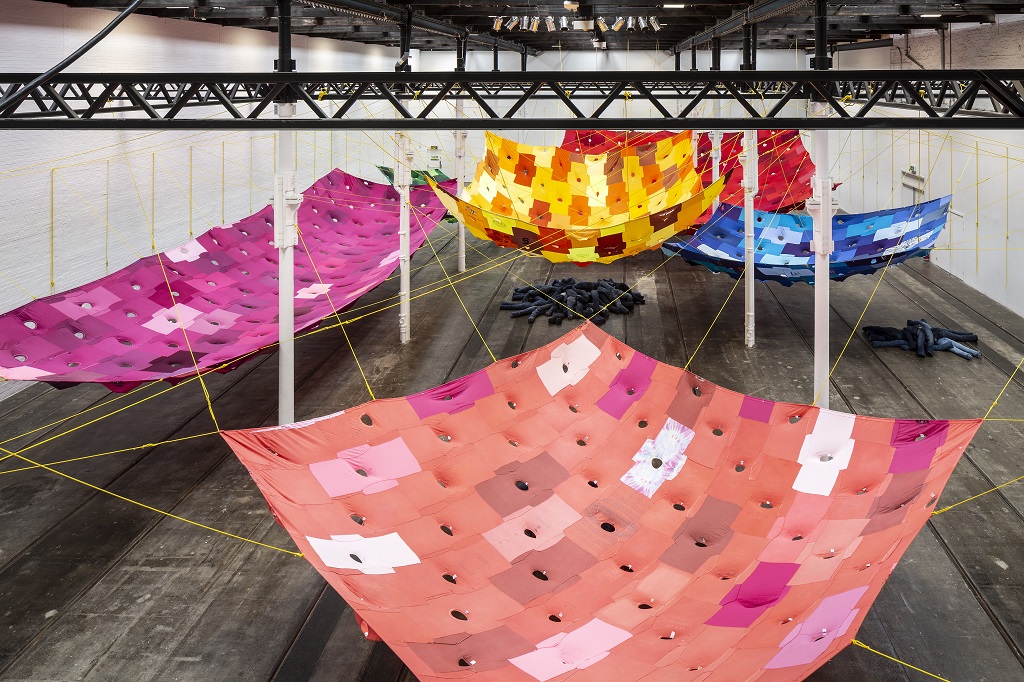
Add a splash of colour to your life with exhibition
Time’s running out to visit an interactive exhibition that brings Mexico City to Glasgow’s Southside.
Tramway presents Bara Bara Bara, the first solo exhibition by Mexico City based artist Pia Camil in Scotland – with rave reviews, this exhibition has brightened up the darkest of dreich days.
Drawing inspiration from urban forms and mechanisms of exchange, in particular her relationship to Mexico City where she lives and works, this immersive installation hosts new and existing textile sculptures which invite visitors to inhabit and activate the space.
Camil’s immense sculptural installations are comprised of t-shirts and jeans acquired from the street markets of Iztapalapa in Mexico City.
Camil deconstructs the t-shirts and then sews them together, creating large stretches of fabric reflecting the markets housed under patchwork awnings of stretched tarpaulin. The billowing, suspended installation Bara, Bara, Bara draws its name from the pulsating cry of street vendors in Mexico City.
Shortened from barato (cheap), the exclamation is aimed to draw customers’ attention to a wide variety of low-cost goods on sale.
The t-shirts and jeans contained in the work were originally produced in Latin America, sold to retailers and organisations in the United States, and then illicitly found their way back to the bargain markets of Mexico City. By using them in her work, Camil brings attention to contemporary trade routes which commodities and bodies move through, and the inequities of global commerce that define daily life in Mexico City.

T-shirts and colour are at the heart Pia Camil’s Bara Bara Bara, on show at the Tramway in Glasgow
Creating a patchwork of aspirational, commercial and political slogans, the T-shirts also act as repositories of cultural information and consequently form a snapshot of collective consciousness. Collaged together, the polarised statements and imagery people choose to emblazon on their bodies offers a reflection of the social and political allegiances that define our contemporary moment.
The installation Bara, Bara, Bara is participatory artwork – visitors can walk beneath it and poke their heads through the openings of the T-shirts. Resonating within a rich history of radical Latin American women artists, Camil’s Bara, Bara, Bara formally draws inspiration from Brazilian artist Lygia Pape’s seminal 1968 performance Divisor.
In Pape’s work participants walked through the city connected by an enormous piece of white fabric, defying the then Brazilian military dictatorship’s infamous ‘Institutional Act 5’, which banned public protest and gatherings. Camil’s work similarly illustrates the tension between the identity of the individual and the collective.
The artist has also presented a new commission of discarded jeans sewn together, creating intimate and informal seating areas within the gallery. These works create a form of exchange with the viewer, their own bodies becoming an integral part of the work.
Tramway is supported by Glasgow City Council and Creative Scotland.
Bara Bara Bara by Pia Camil can be seen at the Tramway (Main Gallery), 25 Albert Drive, Glasgow, until 23 June. Admission is free.
For more details visit www.tramway.org
TAGS

